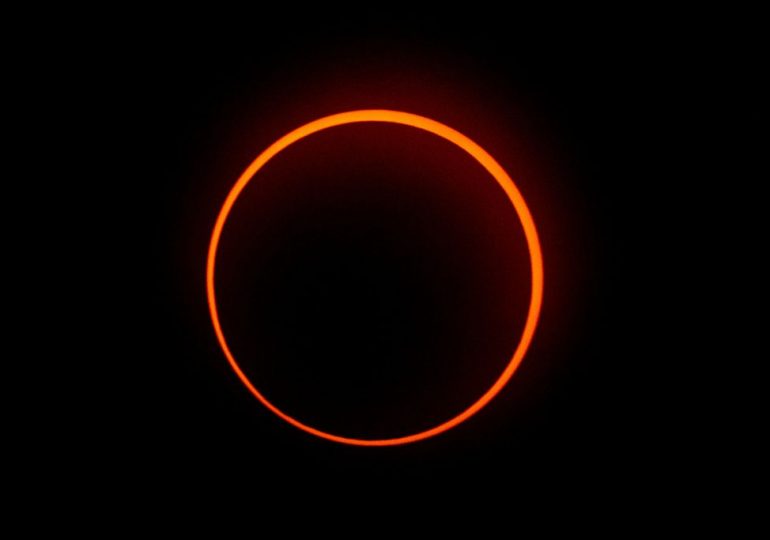For the first time since April’s solar eclipse—during which eleven states in the U.S. were in the path of totality—some will be able to see another eclipse this coming week.
This noteworthy event, called an annular eclipse, or a “ring of fire” eclipse, will be visible over parts of South America on Wednesday, Oct. 2. A partial eclipse will also be visible in parts of the world.
[time-brightcove not-tgx=”true”]
Here is everything you need to know about the highly-anticipated event.
What is an annular “ring of fire” solar eclipse?
An annular solar eclipse occurs when the moon passes directly over the sun’s disk, but the angle makes it so it only obscures most of the sun, instead of the entire sun like during a total eclipse, according to NASA. This is because the eclipse is occurring when the moon is at a point in its orbit that’s farther from Earth than in a total eclipse. Thus, it leaves a bright ring around the eclipsed sun, which appears like a “ring of fire.”
Solar eclipses usually occur about two to five times a year, somewhere on Earth, while total solar eclipses typically occur every year or two. The next total solar eclipse won’t arrive until 2026 and will pass over northern segments of Greenland, Iceland, and Spain.
Where and when will the “ring of fire” solar eclipse be visible?
The path of annularity will run though certain southern parts of Chile and Argentina. According to Space.com, only about 175,000 people live within the path of the annular eclipse, making it much more remote than April’s eclipse, in which 32 million people in the United States alone lived in the path of totality.
The times in which it is visible will vary slightly depending on where the viewer lives, but in both Chile and Argentina, annularity will occur only for between 3-6 minutes, and will occur slightly before 5.30 p.m. local time. In Rapa Nui/Easter Island—a territory of Chile located in the Pacific Ocean—the annular eclipse can be seen around 2.03 p.m. local time.
There are a few notable spots from which to view the “ring of fire,” according to Space.com. These include Perito Moreno National Park, Puerto Deseado, and Puerto San Julián in Argentina, as well as the town of Cochrane in Chile.
Read More: How Animals and Nature React to an Eclipse
Where and when will the partial solar eclipse be visible?
A partial solar eclipse will be seen about 85 minutes before and after the ring. The partial solar eclipse will be visible to those in parts of South America, Antarctica, North America, the Atlantic Ocean, and the Pacific Ocean, including Hawaii.
A full map of the eclipse’s path is available on NASA’s website, which also shows the percentages of the eclipse that will be visible in other parts of the world.
Notable spots to view the partial eclipse include Buenos Aires, Argentina, São Paulo, Brazil, and Asunción, Paraguay.
How do I safely look at an annular solar eclipse?
Since the sun is never completely covered as it is during a total solar eclipse, observers must wear proper eye protection during the eclipse, ensuring not to take it off, even when the “ring of fire” is visible.
As with a total eclipse, regular sunglasses are not safe enough to view an annular solar eclipse with. Safe solar viewers and filters are “thousands of times darker” than regular sunglasses, says NASA.
If you do not have access to safe solar viewers, there are indirect viewing methods that one can use. One of these methods is a pinhole projector, in which small holes (for example, in an index card) can project the image of the sun on a nearby surface. But such alternatives must be carried out with care.









